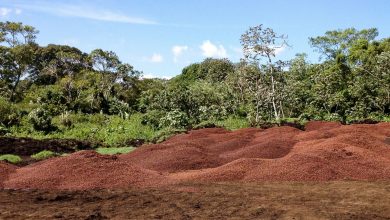Top 5 Terms To Be Known To Whiskey Lover

The terms and phrases used to explain whiskey and the way it’s made will be complicated. Meanings can typically change from distiller to distiller. Some terms are outlined by manufacturing methods and and even have strict authorized necessities, whereas different terms discovered on bottles are extra colloquial and used to convey a basic sense of a whiskey’s style or historical past.
To assist reduce via the noise, we take a look at 5 generally used whiskey terms- cask strength, expression, mash bill, single malt and small batch – as outlined by consultants. Most discuss with how whiskey is distilled, aged or blended.
Here Are Top 5 Terms Every Whiskey Lover Should Know
• Cask Strength
“Cask strength refers to whiskey that comes directly out of the barrel, not proofed down by water,” says Victoria Butler, grasp blender at Tennessee whiskey-producer Uncle Nearest.
Most whiskey is diluted with water to carry it all the way down to 40% abv (alcohol by quantity), or 80 proof. However, some distillers will add much less water and dilute it to style. Sometimes, no water is added in any respect.These whiskeys are normally labeled “cask strength” and are sometimes bottled at 50% abv (100 proof) or larger.
Of course, you at all times have the choice so as to add water or ice to your glass to average dilution, when you choose.
• Expression
“There’s no legal definition for this, it’s parlance used by whiskey makers,” says Louise McGuane, founder and CEO of J.J. Corry Irish Whiskey.
Many distilleries produce multiple sort of whiskey. The ratio of grains used within the mash would possibly differ, it could possibly be fermented or distilled in a barely totally different approach, aged for quite a lot of time periods, or totally different casks could also be used to regulate how the completed whiskey tastes.
Some distilleries name every new variation on their home fashion an “expression,” that means it’s how flavors present in a specific whiskey are expressed, conveyed or launched.
The time period has a second that means too, says McGuane. “It’s whiskey-makers and distilleries expressing themselves and setting themselves apart.”
• Mash Bill
“Mash bill is the grain recipe of a distillate,” says Butler. “The grains are cooked and fermented to begin the whiskey-making process.”
Specifically, that mash bill (or recipe) refers back to the varieties and ranging percentages of grain used to make a whiskey. The 4 top grains utilized in whiskey manufacturing are barley, corn, rye and wheat. Other grains like oats, millet or rice are typically used as effectively.
The term “mash bill” is most frequently used when speaking about American whiskey. For some varieties, the mash bill is strictly regulated. For instance, the mash bill for bourbon have to be no less than 51% corn, whereas for rye, it have to be no less than 51% rye grain. The remaining 49% will be comprised of any grain and might impart totally different flavors to the completed whiskey.
• Single Malt
The best strategy to perceive this time period is to interrupt it down into two elements: “single” refers to at least one distillery, whereas “malt” refers to how the whiskey is made.
“Malt whiskey is a whiskey that is made from 100% malted barley,” says McGuane. Malting is the method of soaking a grain of barley in water till it germinates. Once it sprouts, the barley is dried after which distilled.
A single malt signifies that all of the whiskey is produced at one single distillery.
“People often think that means it’s a single cask,” says McGuane. “It’s not. It can be 400 casks of malt from one distillery blended together.”
While most individuals are conversant in single-malt Scotch, not all single malts come from Scotland. They will be made in Ireland (as J.J. Corry does), the U.S., Japan or anyplace else.
• Small Batch
Exactly how small is a “small batch” whiskey? “It’s unregulated and undefined, there can often be ambiguity with the term,” says John Little, founder and whiskey maker of West Virginia’s Smooth Ambler Spirits.
Primarily utilized in American whiskey, this term is mostly meant to point when a smaller variety of barrels than traditional are blended, normally to create a particular expression from a distiller. But since there are not any particular parameters round what constitutes “small,” this generally is a meaningless time period.
“We have used it in the past, and we still use it, because our batches are still very small—11 barrels or less is the largest we’ve ever done,” says Little. “But what’s small batch to us probably doesn’t mean anything to the heritage distillers.”












